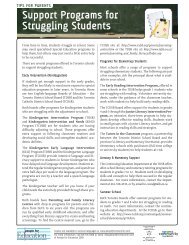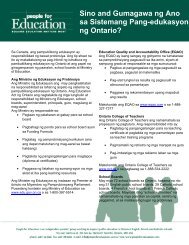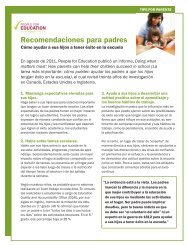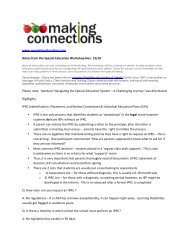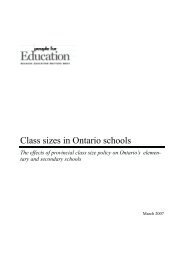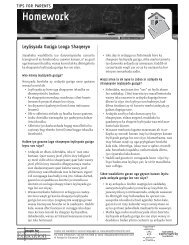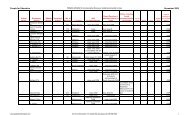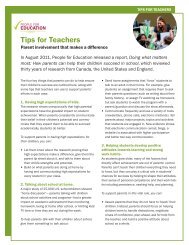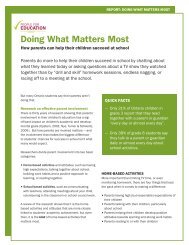Our Children Our Future Our Vision - People for Education
Our Children Our Future Our Vision - People for Education
Our Children Our Future Our Vision - People for Education
Create successful ePaper yourself
Turn your PDF publications into a flip-book with our unique Google optimized e-Paper software.
<strong>Our</strong> <strong>Children</strong>, <strong>Our</strong> <strong>Future</strong>, <strong>Our</strong> <strong>Vision</strong><br />
6. Conclusion<br />
“There is a need <strong>for</strong> First Nations jurisdiction, accommodation and<br />
funding that contribute toward success on First Nation terms!”<br />
(Anishnawbe)<br />
There can be no doubt that one of the most critical components of realizing our inherent right to<br />
self-determination is control over our own educational institutions and outcomes. The ability to<br />
determine the laws, policies, processes, and delivery mechanisms of education has a significant<br />
impact on our ability to achieve meaningful outcomes <strong>for</strong> our children, communities and Nations.<br />
<strong>Our</strong> traditional ways of educating our peoples were based both on local conditions and realities,<br />
while also being adaptable to larger contexts and circumstances. It was holistic, lifelong, integrative,<br />
and adaptive. <strong>Our</strong> education involved a sharing of knowledge from different members of the<br />
community at different stages of life and included both the theoretical, spiritual, physical, scientific,<br />
strategic, and practical elements.<br />
Sadly, our education system must now also include a complex and intensive process of healing,<br />
decolonization, and re-learning our languages and cultures to undo the devastating impacts of<br />
Canadian assimilation policies and laws like residential schools and the Indian Act. This means that<br />
in addition to our traditional means of educating our people, we must also find ways to heal deep<br />
wounds, overcome imposed divisions and regain control over what we learn, how we learn it and<br />
why we learn it.<br />
While the goal of residential school policy was to “kill the Indian in the child,” our goal will be to<br />
restore pride in our children as Anishinabek or Ojibway, <strong>for</strong> example. In other words,<br />
We want education to give our children the knowledge to understand<br />
and be proud of themselves and the knowledge to understand<br />
the world around them. 236<br />
We, as sovereign Indigenous Nations have a fundamental human right to ensure that our future<br />
generations have an education which prepares them <strong>for</strong> both their own responsibilities as citizens<br />
in their respective Nations, as well as providing them with the tools to participate as they choose in<br />
the larger international context. This right is rein<strong>for</strong>ced by our inherent right to be self-determining,<br />
our constitutionally protected Aboriginal right to be self-determining; our Treaty right to education;<br />
and our international human rights to be self-determining and direct the education of our people.<br />
The days of federal control over when, what, why, and how we educate our children are over. We<br />
are re-asserting our sovereignty and jurisdiction and will move <strong>for</strong>ward in education on this basis.<br />
In our traditional territories in what is now known as Ontario, our First Nations will move <strong>for</strong>ward<br />
236 Indian Control, supra note 99 at 1.<br />
Chiefs of Ontario<br />
52




